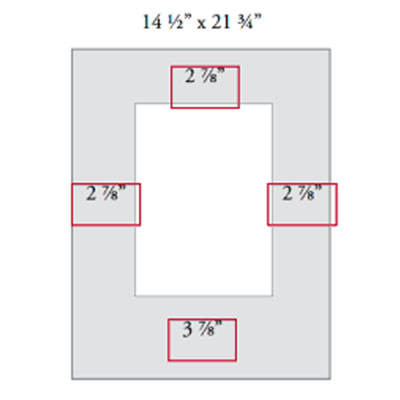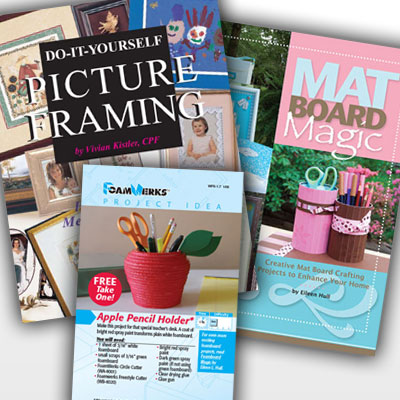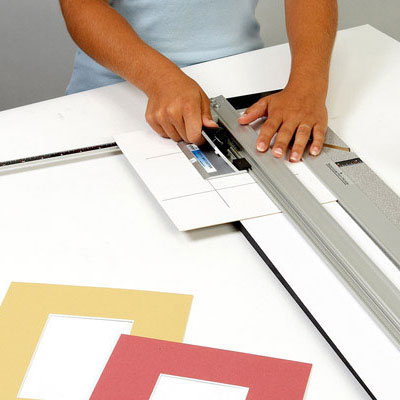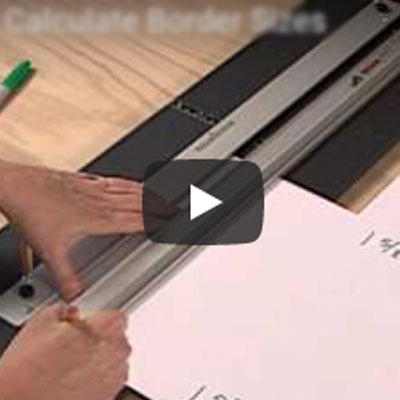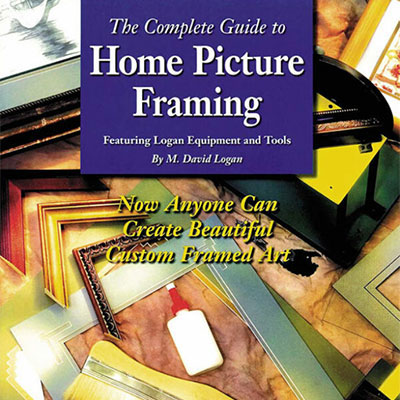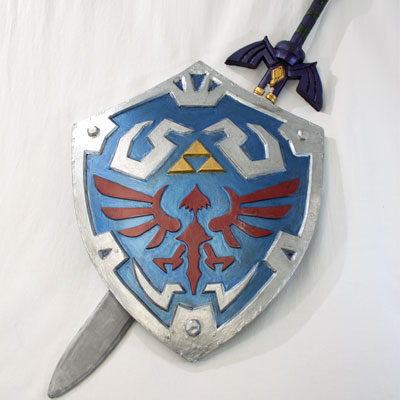The world of picture framing is changing. Time was if you wanted to frame a picture you were obliged to use a professional. The equipment and materials necessary were the exclusive domain of wholesalers who would only sell to those willing to invest the time and capital to start a picture framing business—and that business was defined as a storefront outfitted with fixtures, encumbered with legal and financial obligations, and saddled with a substantial investment in equipment and materials. For those who wanted to start a small framing business from their home, catering to friends and neighbors with the potential for growth—or for the artist or photographer who needed to frame in a professional manner—or for business people who wanted to add picture framing to an existing business—there was no way in.
Thirty years ago Logan Graphic Products, Inc.® quietly led a revolution. They designed a low-priced mat cutter designed for artists, photographers, and what the industry referred to then with some disdain as "garage framers". The Simplex Mat Cutter took the heft out of a professional frame shop's mat cutter, creating a machine designed to cut an average of 15- 25 mats a week, yet retaining all the key ease-of-use features available on professional mat cutters, and at a price the average do-it-yourselfer could afford. The Simplex quickly became Logan's flagship product and grew into a full line of mat cutting equipment with products affordable for any budget.
A common complaint of late has been the cost of picture framing. For those who frame with some regularity, the cost of going to a frame shop is an uncomfortable burden. For those who frame only occasionally, it's a shock! The cost of professional picture framing has climbed in recent years as suppliers and mass merchandisers have shifted the emphasis to costly, archival framing—the Cadillac of framing treatments—and the small, independent frame shops, once the purveyors of a low-priced alternative, have fallen by the wayside. The result has been a professional framing industry devoted almost exclusively to high-end framing. For the man on the street, it seemed there was just no way to frame inexpensively any more.
In basement workshops and on kitchen tables across America a small cadre of devoted crafts-people knew better. With a reasonably priced mat cutter and some store-bought picture frames, they could mat and frame themselves for 50 percent less than the cost of going to a frame shop, and if there was a woodworker in the home, something remarkable could happen. By cutting and joining their own frames, these same craftspeople could take as much as 75 percent out of the cost of traditional framing.
At the other end of the market, traditional picture framing suppliers viewed the stirrings from below as a threat to their livelihood. Consequently, if a home picture framer contacted his local wholesaler looking to purchase picture frame mouldings in length so that he could cut and join his own frames, he was gently but firmly turned away. If he wanted to buy chopping and joining equipment, he was presented with prices that staggered him. And if he wanted to learn how to do it, he was informed that he would need to make a substantial investment in a serious business enterprise and show a financial commitment to his future as a professional picture framer.
It is a credit to those early home framers that against all odds they continued to strive to do their own picture framing. Without easy access to equipment or materials, they kept at it, producing quality work. It is a credit to those small business owners who saw picture framing as a viable complementary offering to their main line of business, that they made it happen. It is a credit to artists and photographers everywhere who refused to hand over a substantial part of their profits for framing that they elected to do it themselves. Given the climate in which they were working, it's a credit to anyone who has done their own picture framing that they have succeeded. And it is due to their determined efforts that the world of picture framing is now changing.
Logan Graphic Products, the worldwide leader in mat cutting equipment, has seen the trend and has now developed a full line of frame making equipment, which, in addition to their mat cutter line, provides small, start-up and do-it-yourself picture framers with the ability to produce quality framing without a disheartening outlay of cash and commitment. Moreover, through their dealers, Logan now offers a wide range of quality picture frame moulding in length, mouldings that can be accurately cut and joined at home or in a small business setting. And Logan is not alone. In the same spirit other manufacturers have come to thefore, companies like Lineco, Inc. and Filmoplast, both purveyors of quality artwork mounting tapes, and 3M, Inc., the worldwide leader in mounting adhesives and tape application tools. All have as their goal the simple concept of making picture framing accessible to anyone who wants to do it.
So the trend toward picture framing for the small, start-up and do-it-yourself picture framer is well underway. For those seeking a professional picture framer to provide a high-end service, there are still plenty of them; but now, by virtue of those brave few who toughed it out and demonstrated the need, there are other, less expensive ways to frame too.





